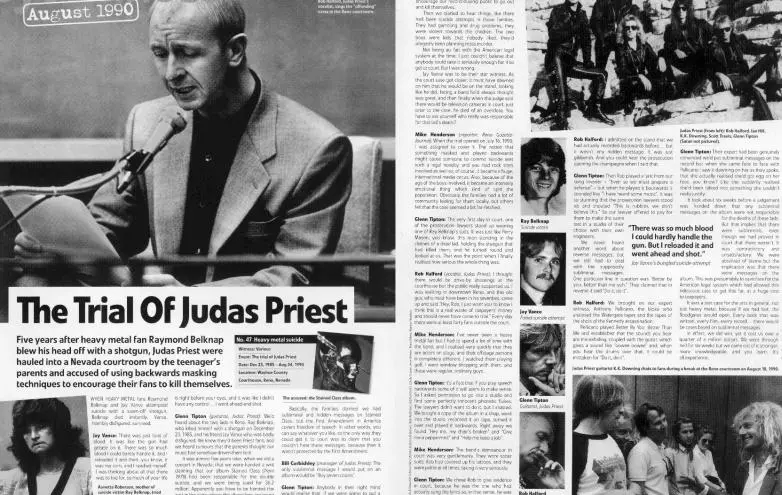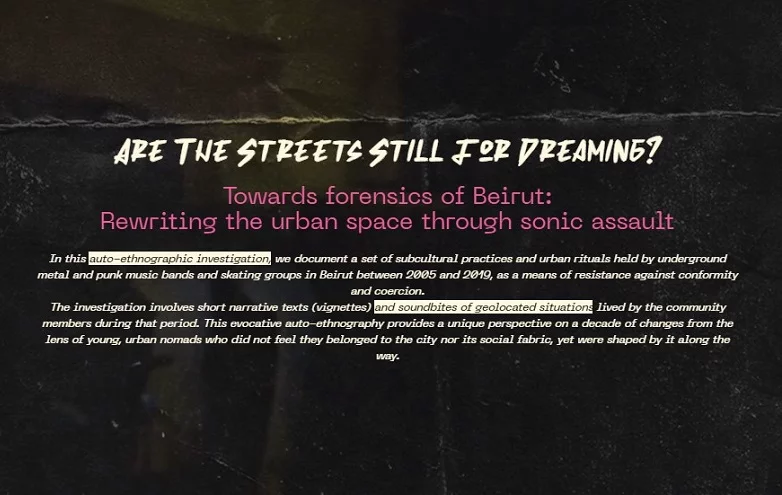The following article is a term paper written for my English class at NDU on May 3rd 2012.
Since the very first heavy metal album came out, this subgenre of rock n’ roll has been highly criticized by parents and highly acclaimed by teenagers. The lyrical themes behind this music usually revolve around drugs, sex, violence, and mythology to name a few. But the most extreme subject that their lyrics have dealt with is suicide. Over the past few years some suicide cases have been related to heavy metal music because some lyrics contain subliminal or direct words promoting suicide. And parents have been using this music as an excuse for their lack of upbringing and attention to their children’s needs. And over the years we have seen numerous occasions were heavy metal bands are brought to court in an attempt to be blamed for a person’s suicide. That is why in this argument I will refute the case of there being any relation of any kind between heavy metal music and suicide.

In December 1985, two people committed suicide after listening to a 1978 Judas Priest album called “Stained Class” for six hours straight. 18 year old Raymond Belknap (a teenager) and 20 year old James Vance (a young adult) shot themselves in a Reno churchyard after listening to the album, where Raymond survived the gunshot but was severely damaged physically (but live long after the accident). The parents of these two brought the matter to court saying that Judas Priest are the ones to blame for one’s death and the others’ severe injury. They used the lyrical content of the album as the kindle that lead to these wild actions, note that the word suicide does not exist in any of the songs on the album (NY times, 1988, p.1). In August 24, 1990 the court dealing with this case stated that the band bear no responsibility of the men’s suicide due to lack of evidence brought from the parents’ side. This was due to the parents being unable to find any direct or indirect messages in the album encouraging suicide. Add to that a testimony said that in addition to listening to the album before the committed suicide the two were smoking marijuana and consuming alcohol, and as we know this deadly combination could lead to actions beyond a person’s control (Reuters, 1990, p.1). Looking deeper into this case I found a small background checkup about Raymond Belknap. This checkup stated that Belknap suffered child abuse and came from a family that went through divorce that led to his alcohol problems. Also an interesting fact about the family was that Raymond’s sister tried taking her own life away, not once but twice, and she wasn’t even a fan of heavy metal music (Maslin, 1992, p.1). Moving on to James, he once wrote in a questionnaire of a treatment center that his favorite leisure time activity was doing drugs. Like Raymond, James had a hard childhood due to his father’s drinking and gambling problems (Maslin, 1992, p.1). Going on to the defendant’s side, the manager of the Judas Priest band Bill Curbishley said that if they wanted to send any hidden messages through their music it would be to buy more copies of their album to make more money and not provoking suicide because that would be bad for their sales (Rohter, 1990, p.1).
Experts on teenage suicide relate suicide to depression, use of drugs and alcohol, and possession of firearms. But still parents, and their fellow lawyers, beg to differ insisting that the lyrical content of this genre can kill. A court case like the one above brings up further thoughts of whether other forms of art should be regulated due its possibility of affecting teenagers wrongly. If this action is undertaken then many prime time shows on TV would be cancelled, also books, and newspaper articles. Since some studies show that when the latter has articles about suicide it prompts some people to commit the same type of suicide (NY Times, 1988, p.1).
Some popular examples of heavy metal songs addressing the subject of suicide are “Suicide Solution” by Ozzy Osbourne, “Suicide Note parts 1 and 2” by Pantera, “Nutshell” by Alice in Chains, “Suicide” by Soundgarden, “Last Resort” by Papa Roach, “Wait and Bleed” by Slipknot, and “Bother” by Seether (Songs About Suicide,2007). And the most popular and mainstream of all is Metallica’s “Fade to Black”, the song is one of their most depressing songs which was written when the band was going through some tough times in their early years. Lead singer James Hetfield described the song in an interview with Guitar World magazine as being a straight-up suicide song and talked about how this song caused a stir in society about how it was encouraging suicide. But on the contrary fans were writing letters to the band saying how this song related to how they felt, helped them get out of some rough times, and made them feel better (Guitar World, 1991). So as we can see the lyrics of this music is addressing the youth in a way as if they are telling them that they are not alone and that they know how they feel giving somewhat of a boost of self-esteem to help them get put of their situations.

A heavy metal artist’s work isn’t to be a role model for teenagers. Their music has had a way of grabbing youngsters’ attention because in a way they express what teenagers actually feel inside and make them feel like they are not the only ones going through these hard times. Suicide-prevention counselors tell parents to listen to what their melancholic teens have to say and not criticize them or their music hastily. If parents just listen to what kind of music their children listen to then they would find out why this depressing music grabs their attention (NY times, 1988, p.4).
Heavy Metal lyrics do give that extra push for someone to do something extreme as suicide. Some songs like Ozzy Osbourne’s “Suicide Solution” encourage life taking by heavy use of drugs and alcohol, but his case was protected by the First Amendment which states freedom of speech (NY times, 1988, p.1). But I believe when parents raise their children with good morale upbringings they need not fear of outside influences; being peer pressure, alcohol, drugs, or even suicidal music. By that parents can assure that no matter what their children listen to their conscience will be both strong and aware enough to make them know what’s right and what’s wrong.
All in all I believe I have clarified the nonexistence of any relation of any sorts between heavy metal music and the action of suicide. And as we’ve seen if a teenager has strong moral upbringing by his parents then he would not fall into these wrong doings. And that we see how parents rapidly jump into court when one of their teens commit suicide blaming it on heavy metal music, when not taking into consideration their part that probably triggered their child’s suicide. As I final thought I believe that heavy metal music is just a way of one expressing himself; letting out all that anger and bottled up feelings.
- References
1- Maslin, J. (1992, August 6). Teen-age suicide, rock and parental deception. New York Times, p.1
2- Rohter, L. (1990, July 17). 2 families sue heavy-metal band as having driven sons to suicide. New York Times, p.1
3- (1990, August 25). Band is held not liable in suicides of two fans. Reuters, p.1
http://www.nytimes.com/1990/08/25/arts/band-is-held-not-liable-in-suicides-of-two-fans.html#
4- (1988, September 25). Pop view; speed-metal: extreme, yes: evil, no. New York Times, p. 1-4
http://www.nytimes.com/1988/09/25/arts/pop-view-speed-metal-extreme-yes-evil-no.html?src=pm
5- (1991, October). Prime cuts: metallica. Guitar World
http://www.guitarworld.com/prime-cuts-metallica?page=0,1
6- (2004, December 2). Songs About Suicide
http://www.epinions.com/content_4168261764?sb=1









